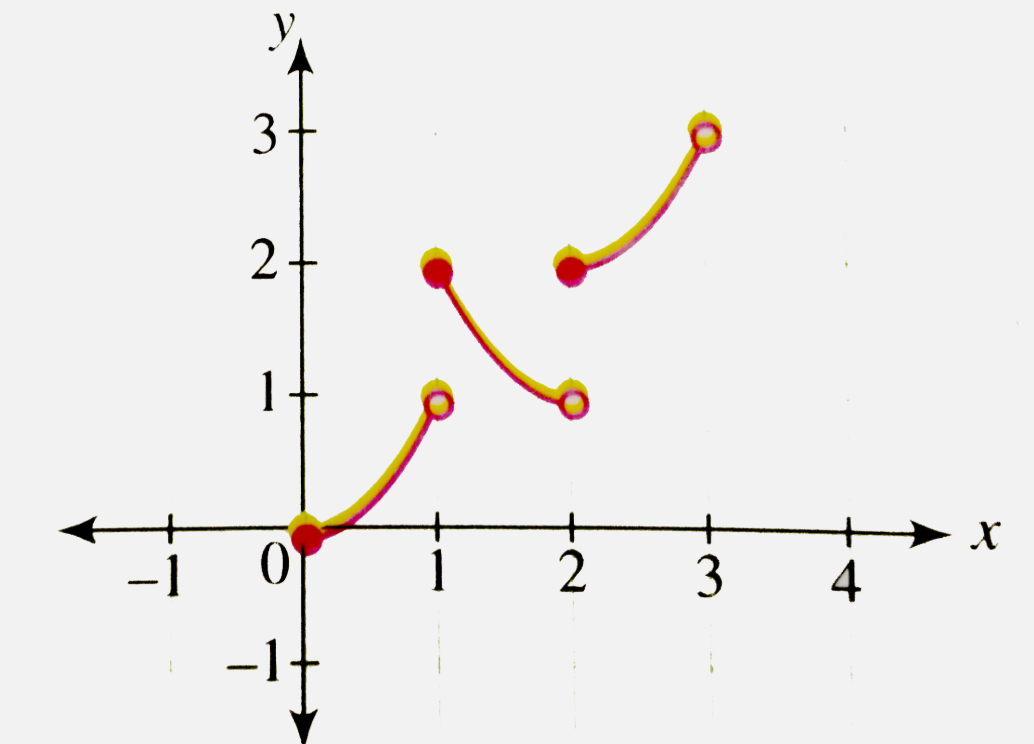Consider the function f(x)=√2−x+√1+x. If d denotes the number of integers in the domain of f and 'r ' denotes the number of integers in the range of f, then (d+r) equalsSolution in Tamil
The correct Answer is:5
Step by step video & image solution for Consider the function f(x)=sqrt(2-x)+sqrt(1+x). If d denotes the number of integers in the domain of f and ' r ' denotes the number of integers in the range of f, then (d+r) equals by Maths experts to help you in doubts & scoring excellent marks in Class 12 exams.
Updated on:21/07/2023Topper's Solved these Questions
- FUNCTIONSBOOK - CENGAGECHAPTER - FUNCTIONSEXERCISE - Comprehension Type
7 Videos
- EQUATION OF PLANE AND ITS APPLICATIONS -IIBOOK - CENGAGECHAPTER - EQUATION OF PLANE AND ITS APPLICATIONS -IIEXERCISE - DPP 3.4
18 Videos
- GETTING STARTED WITH GRAPHSBOOK - CENGAGECHAPTER - GETTING STARTED WITH GRAPHSEXERCISE - Exercise
18 Videos
Similar Questions
Let f(x)=x2−2x−1∀x∈R Let f:(−∞,a]→[b,∞), where a is the largest real number for which f(x) is bijective. If f:R→R , g(x)=f(x)+3x−1 , then the least value of function y=g(|x|) is
View SolutionLet A(0,6,6), B(6,6,0) and C(6,0,6) are three points and point D is moving on the line x+z−3=0=y. If G is centroid of ΔABC, then minimum value of GD is
View SolutionDoes the following graph pass the vertical or horizontal line test ?

View SolutionDomain (D) and range (R) of f(x)=sin−1(cos−1[x]), where [.] denotes the greatest integer function, is
View SolutionFor the function f(x)=ex+1ex−1 if n(d) denotes the number of integers which are not in its domain and n(r) denotes the number of integers which are not in its range, then n(d)+n(r) is equal to
View SolutionDomain of f(x)=sqrt([x]-1+x^(2)); where [.] denotes the greatest integer function,is
View SolutionIf [x] denotes the greatest integer <=x and f(x)=(1)/([x])+sqrt((2-x)x, then ) the domain of f is
View SolutionThe domain of the function f(x)=(1)/(sqrt([x]^(2)-2[x]-8)) is,where [^(*)] denotes greatest integer function
View SolutionDomain of f (x)=1[X]+√(2−x)x is equal to (if [x] denotes the greastest integer function ]
View SolutionDomain (D) and range (R ) of f(x)=sin−1(cos−1[x]) where [ ] denotes the greatest integer function is
View SolutionIf [x] denotes the greatest integer function, then the domain of the function
f(x)=√x−[x]log(x2−x) is
View SolutionIf [x] denotes the greatest integer function , then the domain of the function f(x)=√x−[x]log(x2−x) is ,
View Solutionf(x)=cos−1{log[√x3+1]}, find the domain and range of f(x) (where [ * ] denotes the greatest integer function).
View SolutionIf [x] denotes the greatest integer ≤ x and f(x)=1[x]+√(2−x)x, then domain of f is :
View SolutionConsider the function f(x)=√2−x+√1+x .If 'd' denotes the number of integers in the domain of f and r denotes the number of integers in the range of f , then (d+r) is equal to
View SolutionDomain (D) and range (R) of f(x)=sin−1(cos−1[x]), where [.] denotes the greatest integer function, is
View Solution
